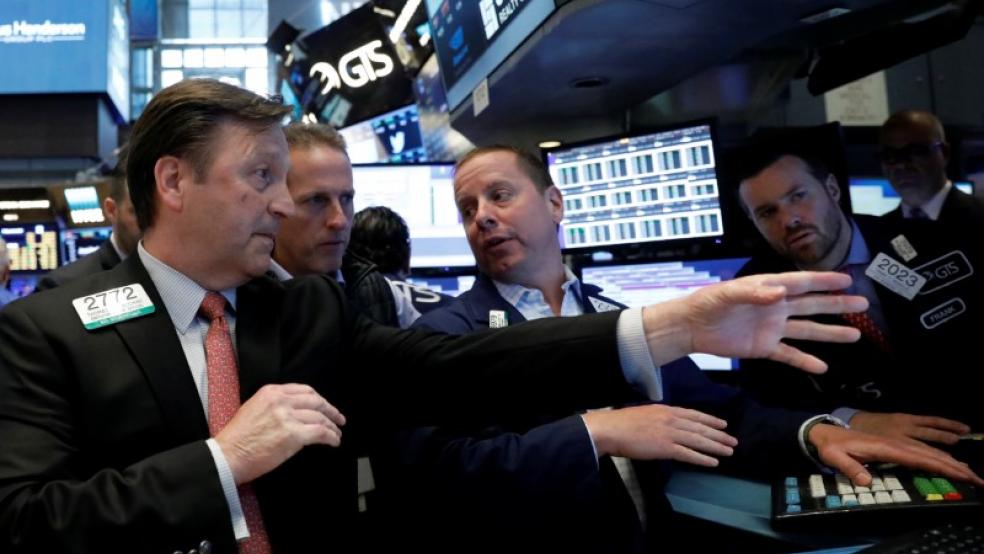NEW YORK (Reuters) - The U.S. stock market is in the middle of its worst three-week stretch in more than four years, but the kind of fear that normally accompanies such drops has not been evident.
The usual ways investors cope with rising anxiety - by buying volatility futures, using lots of bearish put options to protect against losses, or a sharp move into the bond market – have not materialized as they did last summer and autumn, even as the stock market hits 15-month lows. It is not entirely clear why fear indicators have not spiked, but investors point to a mix of factors. Hedge funds have been cutting their exposure to the stock market in recent months, reducing their need to protect against losses. New, external shocks have not materialized in this sell-off, which is more driven by well-established worries over oil, China's faltering growth and weak corporate results.That may change. The CBOE Volatility Index <.vix>, or VIX - the most notable gauge of Wall Street anxiety - hit 30 for the first time in more than four months on Friday, and reached that level again on Wednesday as markets sold off sharply before recovering. But overall, the use of options to bet on volatility and the market's direction has declined in recent months. "Hedging instruments are not being used as aggressively as you would think," said Nick Colas, chief market strategist at the ConvergEx Group in New York.There are about 6.5 million open VIX options contracts, as of Wednesday. That is about 10 percent lower than when the market bottomed in August and September, and 30 percent below the October 2014 selloff.Options used to bet on the direction of the S&P 500 (SPX) have seen an even greater decline in activity. There are 10.7 million open contracts on the index's options compared with 13.1 million contracts in September. VIX and SPX options serve as popular ways to protect against a market drop and the sizable decline in their usage is a sign that investors are not hedging as much as they were last year.In addition, trading in puts - the right to sell an asset at a specified price, which is commonly used by investors to protect against losses - have not attracted the same level of activity as they did in August. The ratio of puts to calls - the right to buy an asset at a specified price - is currently a sedate 0.97, so they are about even, according to the Options Clearing Corporation. By comparison, in August that ratio was 1.47 puts for every call.Investors have said the relatively slow speed of the latest sell-off, when compared with recent panics, has kept hedging subdued. Though the S&P 500 index has dropped to lows not seen since early 2014, the gradual grinding down means that the VIX has only now started to see more elevated levels. The sell-off in August, along with the May 2010 'flash crash' and the August 2011 debt ceiling battle all saw instances where the VIX surpassed 45. Mandy Xu, equity derivatives strategist at Credit Suisse, said that volatility has not spiked as much because the factors driving stocks lower are not new, but the same ones that got the markets worried last year, chiefly the falling price of oil and fears related to the Chinese market."It's the difference between known unknowns versus unknown unknowns," she said. Furthermore, hedge funds, which have been frequent users of options, have weathered this storm well so far. According to Credit Suisse's prime services division, hedge funds' gross exposure to stocks is at a two-year low, and they have only suffered about 25 percent of the downside move in the market. That has kept their losses to about 2.5 percent so far this year, according to Hedge Fund Research.Should the selling worsen again, if an unforeseen event does trigger more fear, the lack of hedging could expose investors and the market as a whole to pain."If they don't protect themselves and they have only made their long bets longer, that creates a potential for that final capitulation trade, the point where everybody says ‘enough pain, already’ and they sell, hopefully in one big flush," said Stephen Guilfoyle, managing director of floor operations at Deep Value Execution Services. (Reporting by Saqib Iqbal Ahmed; Editing by David Gaffen and Bill Rigby)Where's the fear? Hedging action subdued in stock sell-off

Shannon Stapleton



